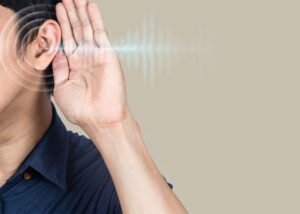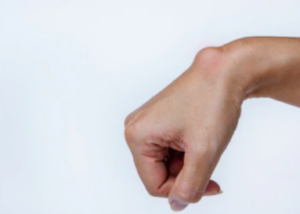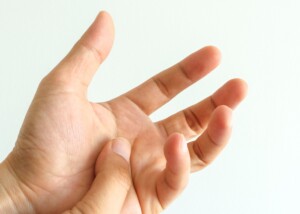What Makes Tinnitus Sometimes Go Away Overnight?

Isn’t it wonderful when your tinnitus magically goes away overnight?
Unfortunately, it comes back to rattle you all throughout your waking moments. (more…)
Five Year Old Constantly Clears Throat: Causes, Solutions

“In general, throat clearing is a non-specific a symptom of many things,” says Dr. Bande Virgil, MD, a board certified pediatrician, professor of clinical pediatrics, and Amazon Best Selling Contributing Author of “The Chronicles of Women in White Coats.”
Why Do Infants Scratch Their Heads?

Why shouldn’t an infant be scratching his or her head?
After all, adults and kids do it all the time: There are many reasons an infant and any other age person will sometimes scratch their head.
The head is covered by skin. And skin is prone to itching. And when something itches, what do we do? We scratch it.
An infant’s fingers can make their way to his or her head and scratch an itchy area, even though the movements won’t be as coordinated due to the infant’s lack of neuromuscular development.
This may create the illusion that something worse is going on, when all it is, is a very harmless little itch.
A bug could have momentarily landed on the scalp. Are there houseplants in the baby’s room?
Houseplants sometimes attract tiny gnat-like flies. However, this is not the most likely reason for the itching—only a very unconsidered one.
Common Reasons
“Most infant head scratching is normal,” says Joel Gator Warsh, MD, of Integrative Pediatrics and Medicine, Studio City, CA, and part of the pediatric staff of Cedars-Sinai Hospital.
“Like any adult, there can be a variety of reasons babies scratch their head including behavior, irritation, dry skin and infections.
“The most common cause of an itchy scalp in infants is seborrheic dermatitis, which is a common dermatologic condition with dry, flaky skin of the scalp in babies. It looks crusty and yellow.”
This is the same condition that causes dandruff in adults. Because adults (most, anyways) have much more hair than infants, the distinctive appearance of seborrheic dermatitis is concealed.
On a baby with very little hair, it will look more serious than it actually is. But never diagnose it yourself. Always have a doctor make the official diagnosis.
Dr. Warsh also says, “Infection of the hair follicles called folliculitis can lead to inflammation and an itchy scalp.
“Eczema, which is a condition of dry skin and moisture loss, can lead to inflammation of the scalp leading to constant scratching.”
Getting an Infant to Stop Scratching His Head
“Try using coconut butter, shea butter or a topical emollient,” says Dr. Warsh.
“A shampoo or product can cause a chemical dermatitis leading to an itchy scalp.
“I would also consider a vitamin and nutrient deficiency such as B vitamins, zinc or selenium which can affect hair growth and the skin.”
 Dr. Warsh and his Studio City, Los Angeles clinic treat a wide array of common pediatric issues using holistic and conventional treatments. He works with nutritionists, naturopaths, Ayurvedic practitioners, acupuncturists and more.
Dr. Warsh and his Studio City, Los Angeles clinic treat a wide array of common pediatric issues using holistic and conventional treatments. He works with nutritionists, naturopaths, Ayurvedic practitioners, acupuncturists and more.
 Lorra Garrick has been covering medical, fitness and cybersecurity topics for many years, having written thousands of articles for print magazines and websites, including as a ghostwriter. She’s also a former ACE-certified personal trainer.
Lorra Garrick has been covering medical, fitness and cybersecurity topics for many years, having written thousands of articles for print magazines and websites, including as a ghostwriter. She’s also a former ACE-certified personal trainer.
BOTH Wrists Hurt Every Time You Do Pushups: Causes, Solutions

How is it that every time you do pushups, BOTH wrists end up hurting, yet you have no problem doing other pushing routines at the gym?
Though carpal tunnel syndrome can cause a pain in both wrists, it isn’t nearly the most likely cause, especially if the only time you feel the pain is during pushups.
Furthermore, carpal tunnel syndrome, if it causes pain during pushing exercises, will also likely be causing other symptoms such as numbness and tingling in the fingers and/or forearm tingling and pain – regardless of activity.
There is a much more likely cause of experiencing pain in both wrists upon doing pushups.
“The tendons and ligaments from the hand to the forearm are what gives the wrist its flexibility,” begins J. Mark Anderson, MD, DABFM, of Executive Medicine of Texas and who is board certified in family medicine.
“If pain is in both wrists during pushups, it’s often due to a lack of flexibility,” says Dr. Anderson.
“People tend to lose flexibility in their wrists unless they are doing regular exercises involving the wrist or stretching and flexibility exercises targeting the wrists.”
Flexibility Exercises
Pushups will improve flexibility in the wrists, since this exercise requires sustained wrist extension – unless you do variations such as pushups on your knuckles, fingertips or using handles or dumbbells.
But these variations, if done for every set, will deprive the joint from developing more flexibility. Do them for some sets but not all.
What you can also do, however, is simply pull (gently) your hand towards the topside of your forearm with the other hand and hold for 30 seconds, a few times every day. This will loosen things up.
A more comprehensive approach is to take up yoga. Many positions involve sustained wrist extension and will strengthen the joint.

“Pain in the wrist during exercise means the body is trying to warn the person of a problem,” says Dr. Anderson.
“Heeding the warning by changing position, modifying the exercise or stopping exercise altogether may keep the person from developing a more serious condition,” if the situation is more than just a benign case of stiff joints.
“If you experience pain in the wrist that is not immediately relieved when the exercise has stopped, it may require icing and/or bracing.
“If the pain is intense or lasts longer than 48 hours, seek the attention of a medical professional.”

Dr. Anderson is coauthor of the award-winning book, “Stay Young: 10 Proven Steps to Ultimate Health,” and host of the nationally syndicated Staying Young Show which goes to podcast as Staying Young Show 2.0.
 Lorra Garrick has been covering medical, fitness and cybersecurity topics for many years, having written thousands of articles for print magazines and websites, including as a ghostwriter. She’s also a former ACE-certified personal trainer.
Lorra Garrick has been covering medical, fitness and cybersecurity topics for many years, having written thousands of articles for print magazines and websites, including as a ghostwriter. She’s also a former ACE-certified personal trainer.
Pain in Only One Wrist when Doing Pushups: Most Likely Cause

Can you bench press without a problem, but when it comes to pushups, you always get pain in only one wrist? And it’s enough pain to screw up the set.
“Pain in one wrist during pushups, or other weight bearing exercises, can be caused by a number of issues, but it almost always is due to a problem with a tendon or ligament,” says J. Mark Anderson, MD, DABFM, of Executive Medicine of Texas and who is board certified in family medicine.
“When pain is experienced in one wrist, it may be due to tendonitis, like what is seen in carpal tunnel syndrome, or other inflammatory conditions.”
If you have carpal tunnel syndrome, however, there’s a pretty good chance that you experience symptoms at times other than during exercise.
For example, your fingers may tingle or be numb; and flexing the wrist (bending the hand towards the underside of your forearm) triggers pain. There may also be spontaneous pain in the forearm.
More Likely Cause of Pain in One Wrist While Doing Pushups
“In some cases, patients may have a ganglion cyst around the wrist, hand or forearm area,” says Dr. Anderson.
“This is a non-cancerous fluid filled sac that is usually not painful on its own, but when they press on a nerve, it can cause sharp, radiating pains.”

Shutterstock/girl-think-position
One of the distinguishing characteristics of a ganglion cyst is that the pain immediately stops when the offending activity ceases.
A ganglion cyst can sometimes be seen as a lump somewhere on the wrist (though they can appear elsewhere on the hand). It feels rather rubbery and gives when you press into it.
The only way to get rid of it is needle aspiration by a doctor or, if that fails, surgery.
If you have one of these and it’s causing pain in one wrist during pushups, it’s probably not going to get much worse, but don’t be surprised if every so often, it can be felt while bench pressing or doing horizontal chest presses on a machine.
Solution to Pain in One Wrist from Doing Pushups
Here is a solution if the cause is a ganglion cyst.
I’ve had one of these for many years, and I’ve always been a fan of pushups.
The slam-dunk solution is to use pushup handles, or hold dumbbells by their stem or kettlebells by their handles.
This 100 percent solves the problem.

Freepik.com, pressfoto
Furthermore, using handles or dumbbells allows you to go deeper into the movement, recruiting more chest muscle.

Dr. Anderson is coauthor of the award-winning book, “Stay Young: 10 Proven Steps to Ultimate Health,” and host of the nationally syndicated Staying Young Show which goes to podcast as Staying Young Show 2.0.
 Lorra Garrick has been covering medical, fitness and cybersecurity topics for many years, having written thousands of articles for print magazines and websites, including as a ghostwriter. She’s also a former ACE-certified personal trainer.
Lorra Garrick has been covering medical, fitness and cybersecurity topics for many years, having written thousands of articles for print magazines and websites, including as a ghostwriter. She’s also a former ACE-certified personal trainer.
.
Top image: Freepik.com Racool_studio
Is It Safe for Kids to Run Around in Bare Feet?

Aside from bare feet getting sweaty and stinky, is there any harm in letting children run around without any shoes? (more…)
Do Babies Have a Naturally Superior Sense of Smell?

Can the nose of your baby actually detect odors and scents with far more superiority than an adult’s nose?
And if so, can you imagine how awful certain things would smell to the nose with exceptionally keen senses?
“Unlike sight which takes several months to years to develop, a baby is born with a keen sense of smell,” says Joel Gator Warsh, MD, of Integrative Pediatrics and Medicine, Studio City, CA, and part of the pediatric staff of Cedars-Sinai Hospital. (more…)
Goose Egg on Toddler’s Head: Should You See a Doctor ?
Do you know what to do if you happen to discover a goose egg on your toddler’s head, but you have no idea how it got there?
Obviously, the toddler somehow got hit in the head – either from a fall or possibly a thrown object. (more…)
Cause of Just One Finger Getting Icy Cold

It’s one thing when your entire hand feels chilly cold, but what if only one finger feels cold?
This is a very oddball symptom, but it has explanations. (more…)
Can Restless Leg Syndrome Affect Only One Leg?

































































